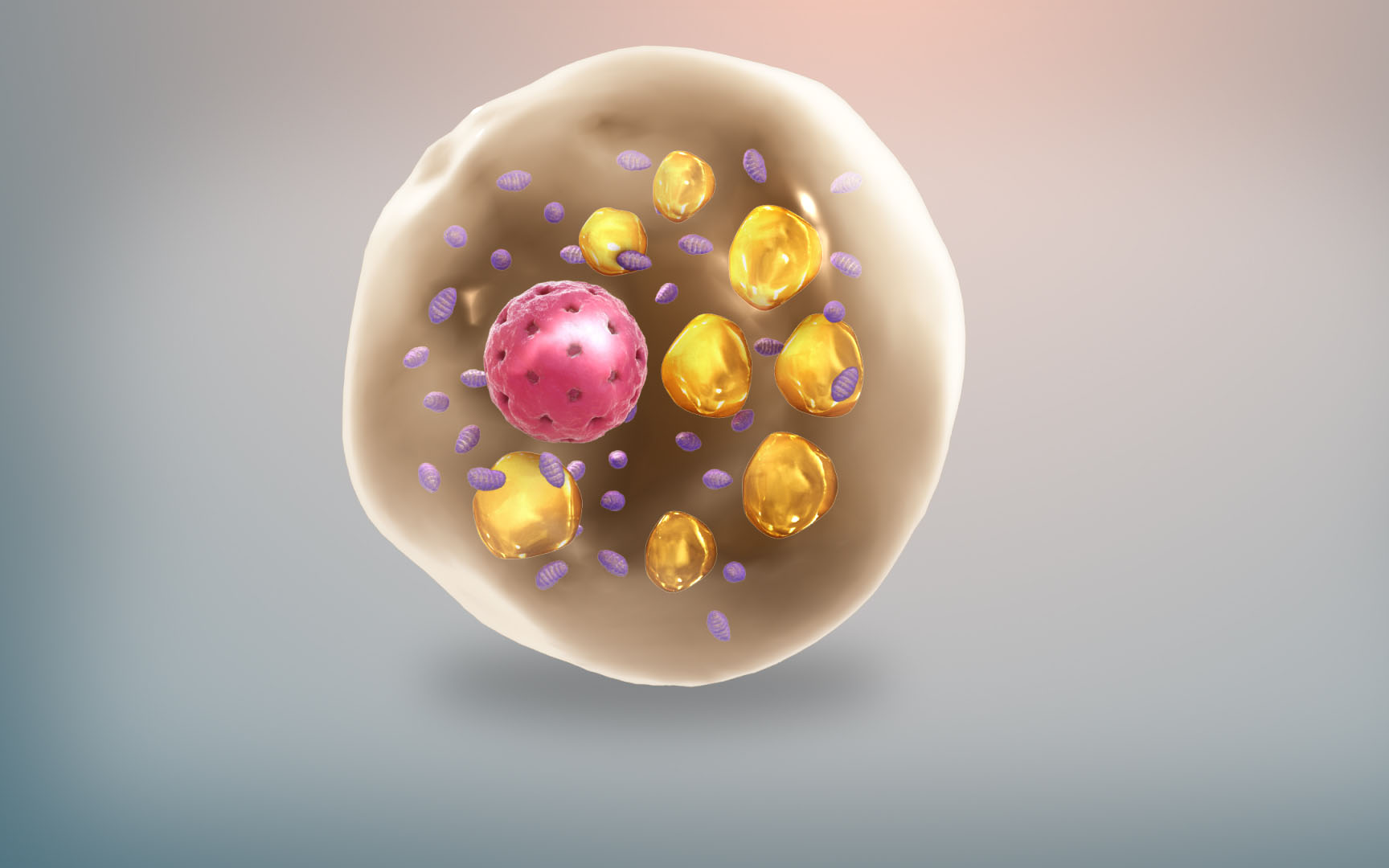Why Are There Different Shades of Fat Cells?

PREMIUM CONTENT for MEMBERS ONLY
By Jill Horn
Many people know that all dietary fats aren’t the same and that there exists a profound difference between saturated and unsaturated fats in their effect on metabolic health. You may or may not be aware however, that the “all fats aren’t the same” statement also applies to the adipose tissue in our bodies. At first, this may be a strange concept, as you were probably taught that fat cells (also called adipocytes) store energy in the form of triglycerides. This is true, but specifically and selectively so, it is only true for what we know as white fat cells. There are two other types of fat cells, brown and beige adipocytes, which we know to be highly metabolically active and hence responsible for roles other than thermogenesis (the generation of heat). These types of adipocytes differ greatly from storage fat, as they exert thermogenic processes in order to produce heat in response to cold exposure and other triggering stimuli. As opposed to white fat cells, brown fat cells are associated with leanness and increased metabolism as they help generate heat in the body. They do so by burning substrates like fatty acids and glucose to generate heat in order to increase core body temperature.
“Brown and beige fat cells contain high levels of a protein called uncoupling protein 1 (UCP1) in their mitochondrial cell wall, with the function of inducing thermogenesis.”
Beige and brown adipocytes don’t just differ from white fat cells in their function, but there are several significant differences regarding the morphology and biochemistry of these cells as well. Importantly, these types of fat cells are densely packed with mitochondria (organelles found in large numbers in most cells, in which the biochemical processes of respiration and energy production occur), and they express key genes involved in the generation of heat. Brown but not beige fat cells also have a strong supply of blood vessels and nerve fibers, and they connect directly to the sympathetic nervous system, one of the major branches of the body’s stress response system. Importantly, brown, and beige fat cells contain high levels of a protein called uncoupling protein 1 (UCP1) in their mitochondrial cell wall. This protein is responsible for the thermogenic, metabolism-boosting effects of brown and beige fat cells, and it is absent or present at very low levels in white fat cells. UCP1 induces thermogenesis by catalyzing the leak of protons across the mitochondrial membrane, thus uncoupling cell respiration from ATP synthesis, with ATP being the energy produced by the cell. As a result, the energy derived from oxidation is then released as heat, a process known as thermogenesis.
“Beige fat cells are a flexible phenotype of adipocytes and can carry out either role – the one of energy storage or the one of thermogenesis, depending on the environment the organism is exposed to.”
Brown fat cells differ from beige fat cells in that they develop into thermogenic adipocytes during cell differentiation, meaning the development of a precursor cell into an adult cell with specific function. Beige fat cells start off as white fat cells and only become thermogenic adipocytes in response to certain triggering stimuli, including cold exposure. Therefore, beige fat cells are a flexible phenotype of adipocytes and can carry out either role – the one of energy storage or the one of thermogenesis, depending on the environment the organism is exposed to. Importantly, brown fat cells are located in select areas, mainly including the interscapular region in and around deep back muscles. Beige fat cells, however, are found in subcutaneous tissue, meaning directly below the skin, which makes sense given their relation to white fat cells.
“The activation of the sympathetic nervous system in response to cold exposure, and the subsequent binding of noradrenaline to adrenergic receptors on beige and brown fat cells, is what induces the thermogenic response in the mitochondria of these cells.”
As briefly mentioned, one of the main triggers of thermogenesis in brown and beige adipocytes is cold exposure, in addition to specific biochemical triggers. Recently, deliberate cold exposure as a way to promote metabolic health has been discussed abundantly in scientific circles, and it has been becoming a popular remedy in the health and wellness community in the form of ice baths and cryotherapy. The pathway by which cold exposure triggers thermogenesis in both beige and brown fat cells is through activation of the sympathetic nervous system, or more precisely, the release of its primary neurotransmitter noradrenaline by peripheral nerve endings. These nerve endings of the sympathetic nervous system densely innervate brown adipose tissue and interact with receptors on brown fat cells. The activation of the sympathetic nervous system in response to cold exposure, and the subsequent binding of noradrenaline to adrenergic receptors on beige and brown fat cells, is what induces the thermogenic response in the mitochondria of these cells.
“In animal studies, it has been found that animals with increased brown/beige fat activity don’t suffer from the negative metabolic effects of a high-fat diet, such as insulin resistance and obesity.”
These concepts are important because we now know that beige and brown fat cells may be protective against metabolic diseases such as type II diabetes, metabolic syndrome, and obesity. In mice, it has been found that animals with increased brown/beige fat activity don’t suffer from the negative metabolic effects of a high-fat diet, such as insulin resistance and obesity. This is an important finding given that a large percentage of the US population has been diagnosed with either obesity, type II diabetes, or both as part of the metabolic syndrome. This knowledge about metabolically active adipose tissue is now starting to be implemented in the treatment of metabolic disease in the form of exposure to cold water, as in ice baths or cold showers, or extremely cold air, as in the use of cryotherapy chambers. The insights obtained from the research studies on brown and beige fat, have resulted in a realization that in addition to diet and exercise, optimal metabolic health depends on other modalities such as the exposure to cold temperatures as well. These new insights can be implemented as an additional treatment modality of metabolic diseases.

Jill Horn is a recent UCLA graduate with a degree in Neuroscience. She is deeply interested in the interconnectedness of body, mind, and spirit takes an integrative approach to health and well-being. She aspires to the public about a research-based lifestyle and mindset that promote health.
✓ This article was reviewed and approved by Emeran Mayer, MD